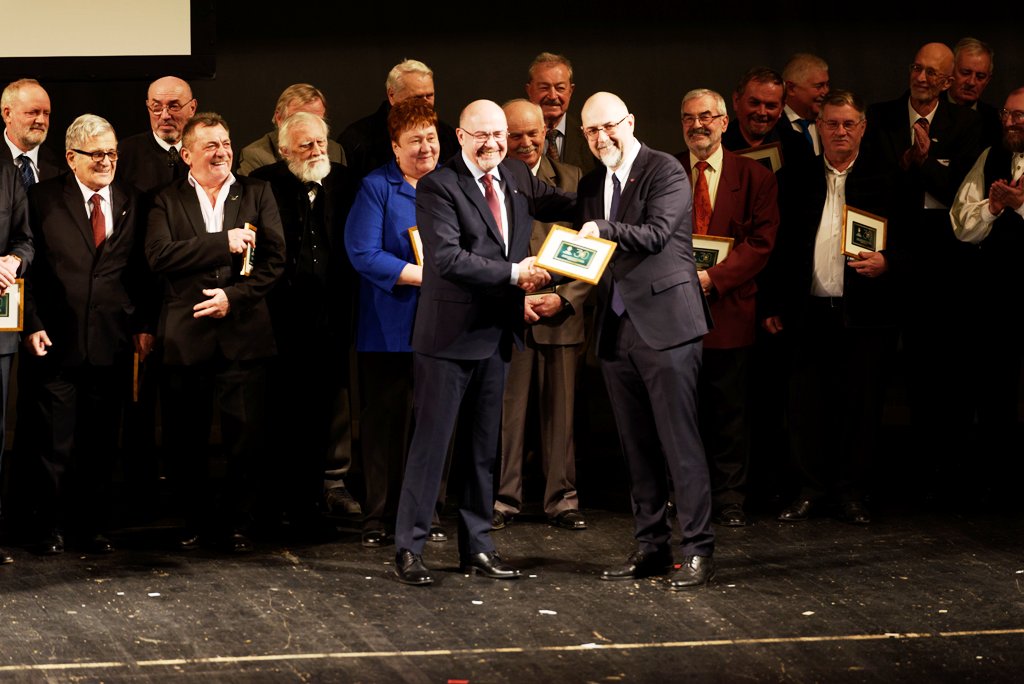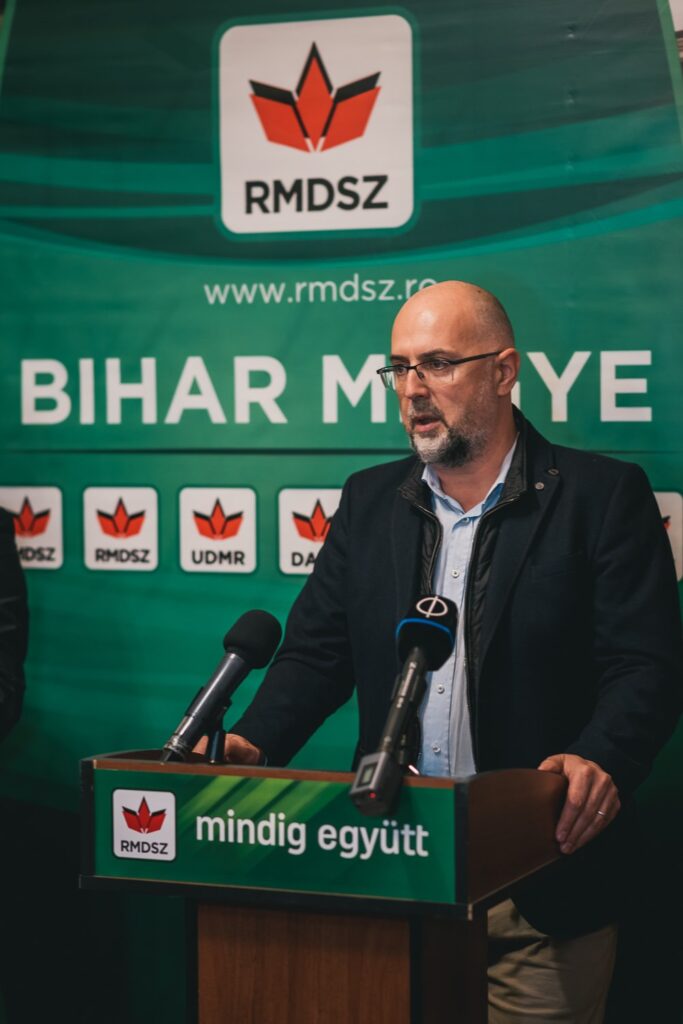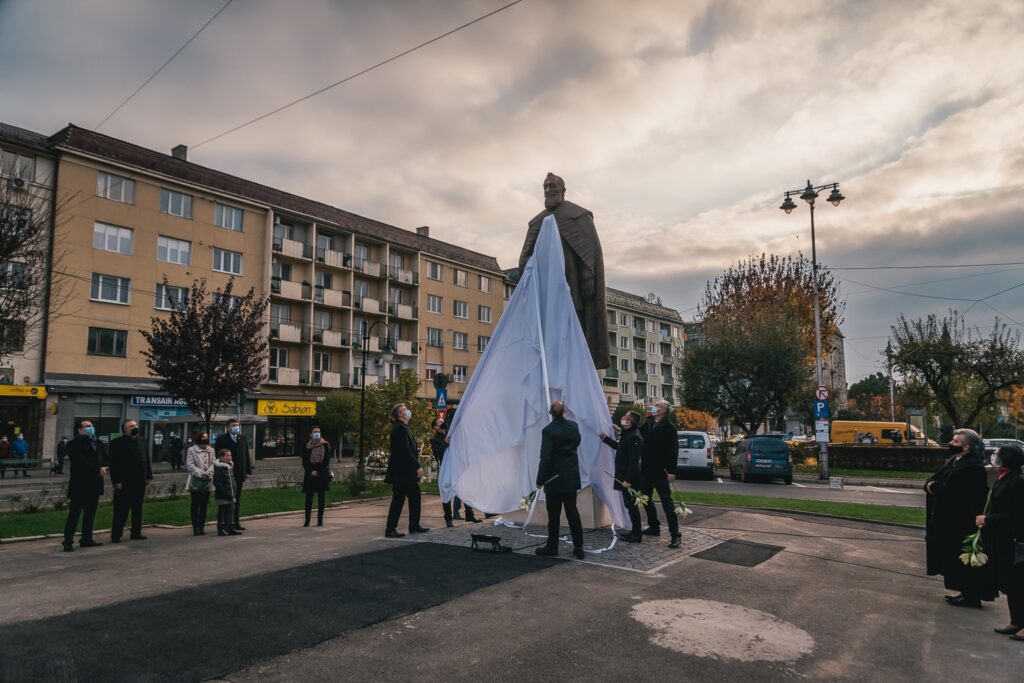Although the organization has never surpassed 8 percent in elections, the Democratic Alliance of Hungarians in Romania (otherwise known by its Hungarian acronym RMDSZ) has ensured an uninterrupted Hungarian legislative presence in both houses of parliament over the past 30 years. In fact, the RMDSZ has had the longest presence in government of all parties.
The RMDSZ is not a political party but a political organization, founded on December 23, 1989, by a group of intellectuals to represent the interests of the Hungarian community in Romania. The initiators were a group of intellectuals in a close relationship – János Lázok, András Béres, Béla Markó, György Gálfalvi – who were followed by many others over the course of the next few months.

As the organization became bigger, gaining support from Hungarians across Transylvania, the first breakthrough happened in December 1996 when the RMDSZ joined forces with CDR (Convenţia Democrată Română, EN: Romanian Democratic Convention) and Uniunea Social Democrată (Social-Democrat Union – an electoral alliance between the former National Salvation Front or FSN, led by Ion Iliescu, and the Social-Democrat Party). The RMDSZ obtained two ministerial portfolios: Tourism (Ákos Birtalan) and National Minorities (György Tokay).
Ferenc Bárányi and Menyhért Gábor Hajdu were the Ministers of Public Health in the next election cycle, while György Tokay kept his position, and Hajdu remained Minister of Public Health while the government led by Mugur Isarescu was in power. In the government led by Adrian Nastase, the RMDSZ had no ministers.
Between 2004 and 2008, the organization joined forces with the Justice and Truth Alliance (National-Liberal Party and Democratic Party, RO: Alianta DA between PNL-PD). The RMDSZ received the most portfolios: Béla Markó, Minister of State in charge of culture, education and research, and European integration; László Borbély, Minister of Regional Development, Public Works, and Housing; Zsolt Nagy, Minister for Communications and Information Technology; and Gyula Winkler, Minister-Delegate for Commerce. This is the time when Zoltán Puskás became the Senate Secretary and Hunor Kelemen the Deputy Chamber’s Secretary.
In April 2007, then PNL prime minister Călin Popescu-Tăriceanu, who was also the party leader, formed a minority government solely with the RMDSZ, and the remaining PD ministers were reshuffled. Attila Korodi joined the above list by becoming Minister of the Environment and Sustainable Development.

After the presidential elections of 2009, PDL and the RMDSZ formed a government, and in the Emil Boc government, Béla Markó became Deputy Premier; Hunor Kelemen, Minister of Culture; László Borbély, Minister of Environment; and Attila Cseke, Minister of Public Health.
The situation changed in 2012 when the RMDSZ left the government, only to re-enter two years later with the following setup: Hunor Kelemen, Deputy Premier and Minister of Culture, and Attila Korodi, Minister of Environment and Climate Change.
The election cycle between 2016 and 2020 was characterized by a strong collaboration with the Social-Democrat Party, the PSD, which ultimately ended in 2019 in the aftermath of the Úz Valley incident.
The biggest success of the RMDSZ was a 2001 bill that allows for the use of minority languages in settlements where the percentage of the minority reaches a 20 percent threshold. This means that the Hungarian language in Transylvania is – in many situations – an official language. “We have pushed this principle through, the practice exists; so we have to expand it in the future,” the then RMDSZ leader Béla Markó said at the 10th Congress of the RMDSZ in 2011. “The next top priority is autonomy – if there are premises for such autonomy; and, in my opinion, we have created them,” he said.

Uninterrupted legislative presence also enabled the RMDSZ to achieve the freedom to use the symbols of minorities, guaranteed by law, and the right to education in the Hungarian language from pre-school through adult education.
The latest political alliance with the PSD wasn’t received well by the Romanian press, however. A Ziare article – anonymous, which leads us to think that it was a sponsored article – scrolls through the past four years of RMDSZ legislation and criticizes a few specific actions:
The RMDSZ terminated its collaboration with the PSD right after the forceful inauguration of the illegally placed concrete crosses in the Úz Valley military graveyard. Since then, the organization has signed a political agreement with the National Liberal Party to back the new government.
With its legislative presence assured for the next parliamentary term, the top priority is to focus on coalition talks, as the country needs a stable government and a budget for next year.
Title image: Lóránt Vincze casts his vote on December 6, 2020. Image source: RMDSZ.